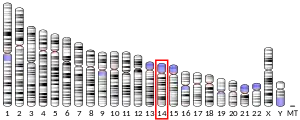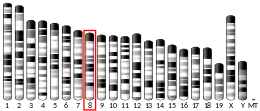| ADAM20 | |||||||||||||||||||||||||||||||||||||||||||||||||||
|---|---|---|---|---|---|---|---|---|---|---|---|---|---|---|---|---|---|---|---|---|---|---|---|---|---|---|---|---|---|---|---|---|---|---|---|---|---|---|---|---|---|---|---|---|---|---|---|---|---|---|---|
| Identifiers | |||||||||||||||||||||||||||||||||||||||||||||||||||
| Aliases | ADAM20, ADAM metallopeptidase domain 20 | ||||||||||||||||||||||||||||||||||||||||||||||||||
| External IDs | OMIM: 603712 MGI: 3045694 HomoloGene: 128364 GeneCards: ADAM20 | ||||||||||||||||||||||||||||||||||||||||||||||||||
| |||||||||||||||||||||||||||||||||||||||||||||||||||
| |||||||||||||||||||||||||||||||||||||||||||||||||||
| |||||||||||||||||||||||||||||||||||||||||||||||||||
| |||||||||||||||||||||||||||||||||||||||||||||||||||
| |||||||||||||||||||||||||||||||||||||||||||||||||||
| Wikidata | |||||||||||||||||||||||||||||||||||||||||||||||||||
| |||||||||||||||||||||||||||||||||||||||||||||||||||
Disintegrin and metalloproteinase domain-containing protein 20 is an enzyme that in humans is encoded by the ADAM20 gene. It is a membrane disintegrin-metalloprotease that belongs to the ADAM family. It is exclusively expressed in Testes and is similar to sperm cell-specific fertilins -alpha and -beta.
Its cDNA is tightly linked to marker SHGC-36001 on chromosome 14q24.1. ADAM20 is related to fertilin α (ADAM1A/B pseudogene), fertilin β (ADAM2), and fertilin γ (ADAM9). In humans, fertilin α has recently been deactivated so ADAM20 may be the functional equivalent fertilin α in humans.[5]
Structure

In common with other ADAM family members, ADAM20 contains a N-terminal reprolysin family propeptide (residues 57–159), reprolysin (M12B) family zinc metalloprotease domain (207–395), disintegrin domain (416–488), and a C-terminal ADAM cysteine-rich domain (493–605).[7]
The propeptide acts both a signal peptide and an activator domain. This prodomain has a cysteine that interacts with a zinc in the catalytic domain, thereby preventing the catalytic activity of the protein.When the pro-protein domain is cleaved, this cysteine zinc bond is broken and the protein is activated.[8] A notable variant showed an amino acid difference in the pro protein domain that prevented the cleavage of this domain which prevented the fusion of the sperm cell to an egg.[9]
References
- 1 2 3 GRCh38: Ensembl release 89: ENSG00000134007 - Ensembl, May 2017
- 1 2 3 GRCm38: Ensembl release 89: ENSMUSG00000054033 - Ensembl, May 2017
- ↑ "Human PubMed Reference:". National Center for Biotechnology Information, U.S. National Library of Medicine.
- ↑ "Mouse PubMed Reference:". National Center for Biotechnology Information, U.S. National Library of Medicine.
- ↑ Hooft van Huijsduijnen R (January 1998). "ADAM 20 and 21; two novel human testis-specific membrane metalloproteases with similarity to fertilin-alpha". Gene. 206 (2): 273–82. doi:10.1016/s0378-1119(97)00597-0. PMID 9469942.
- ↑ "Computed structure model of Disintegrin and metalloproteinase domain-containing protein 20". Research Collaboratory for Structural Bioinformatics (RCSB) Protein Data Bank.
- ↑ "Disintegrin and metalloproteinase domain-containing protein 20". Pfam – via InterPro.
- ↑ Van Wart HE, Birkedal-Hansen H (July 1990). "The cysteine switch: a principle of regulation of metalloproteinase activity with potential applicability to the entire matrix metalloproteinase gene family". Proceedings of the National Academy of Sciences of the United States of America. 87 (14): 5578–82. Bibcode:1990PNAS...87.5578V. doi:10.1073/pnas.87.14.5578. PMC 54368. PMID 2164689.
- ↑ Sha YW, Xu X, Ji ZY, Mei LB, Qiu PP, Ji H, Li P, Li L, Liu WW (January 2018). "Sperm-egg fusion disorder in a Chinese male patient was associated with a rare ADAM20 variant". Oncotarget. 9 (2): 2086–2091. doi:10.18632/oncotarget.23331. PMC 5788623. PMID 29416755.



